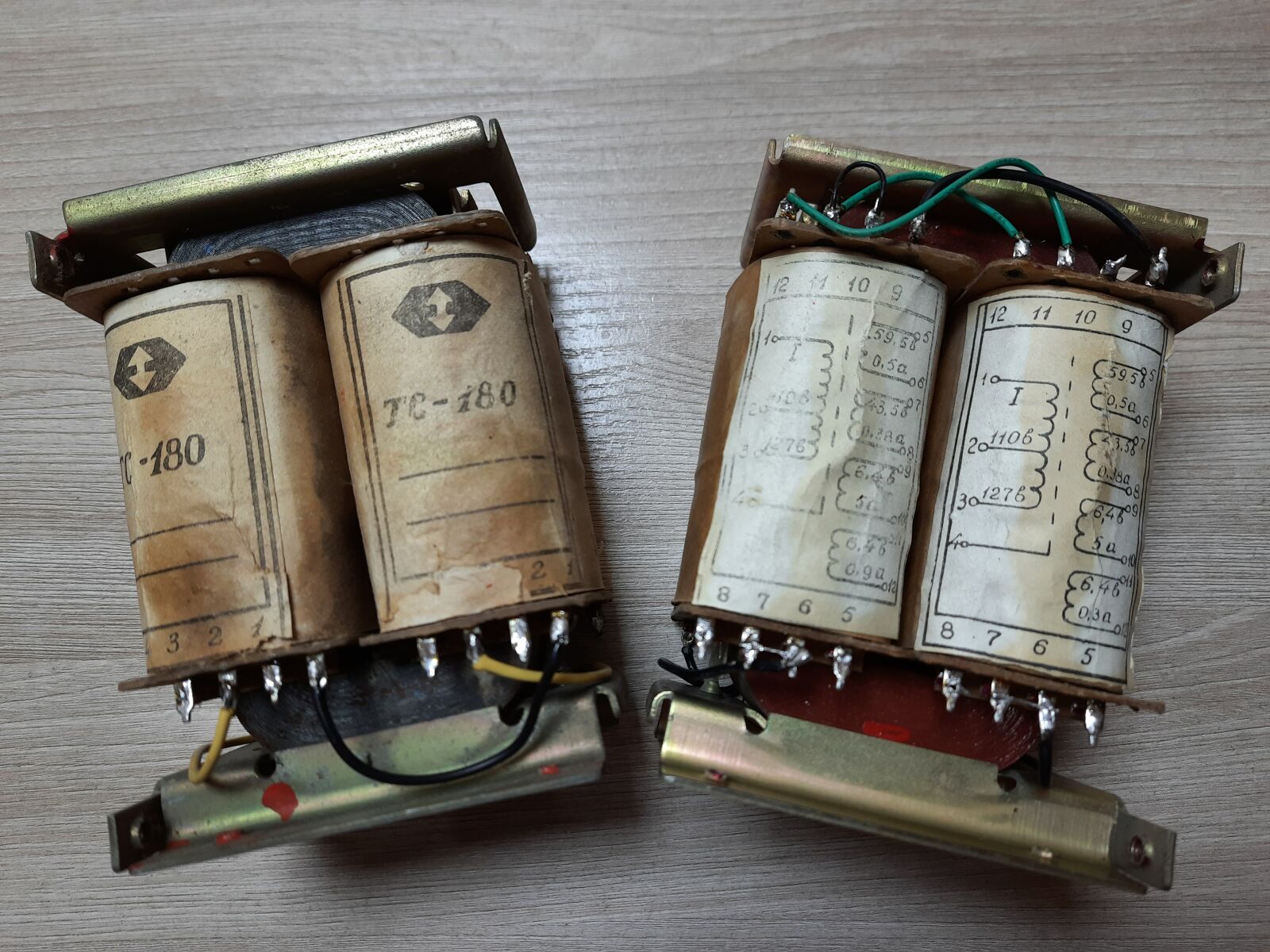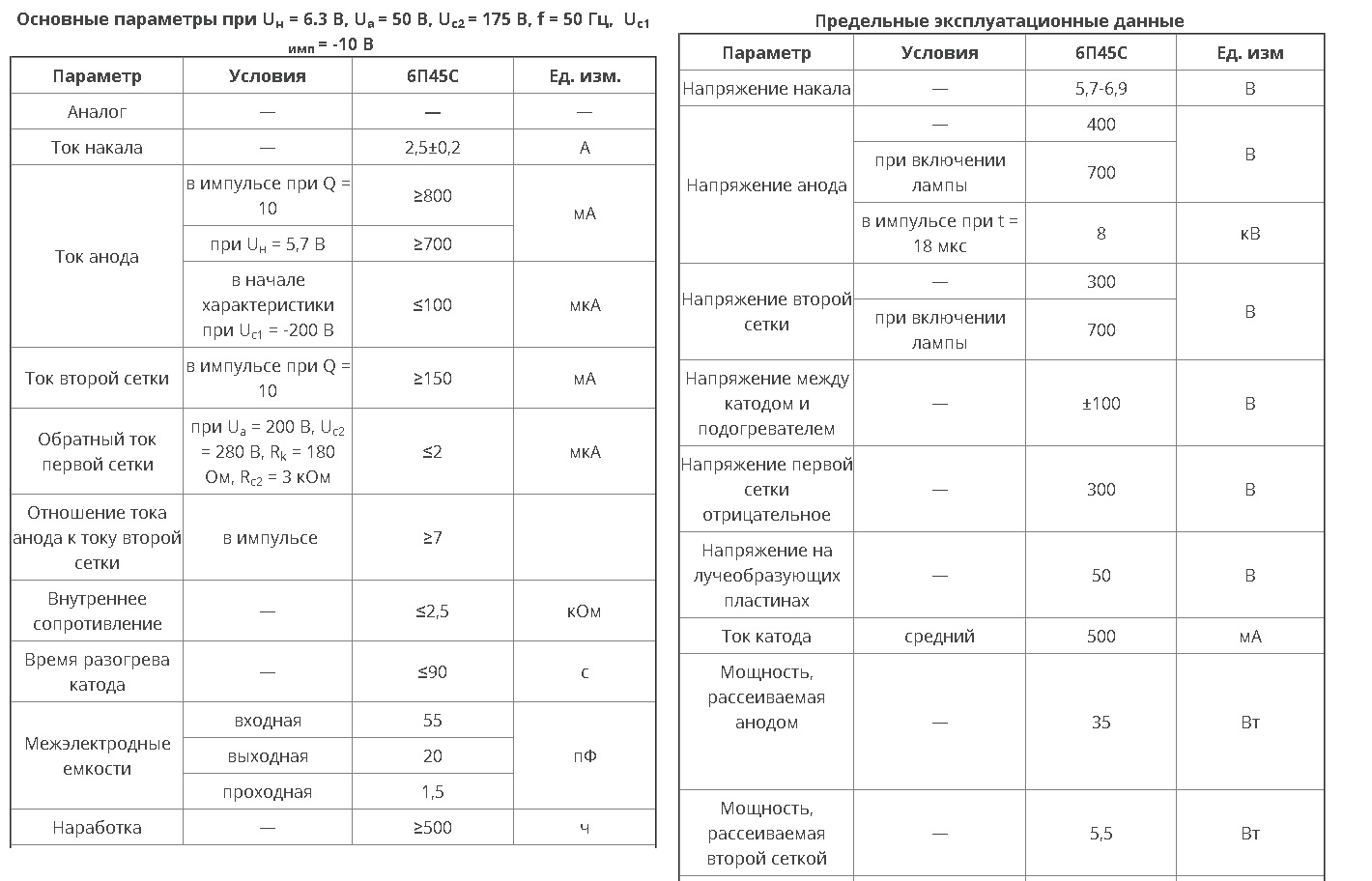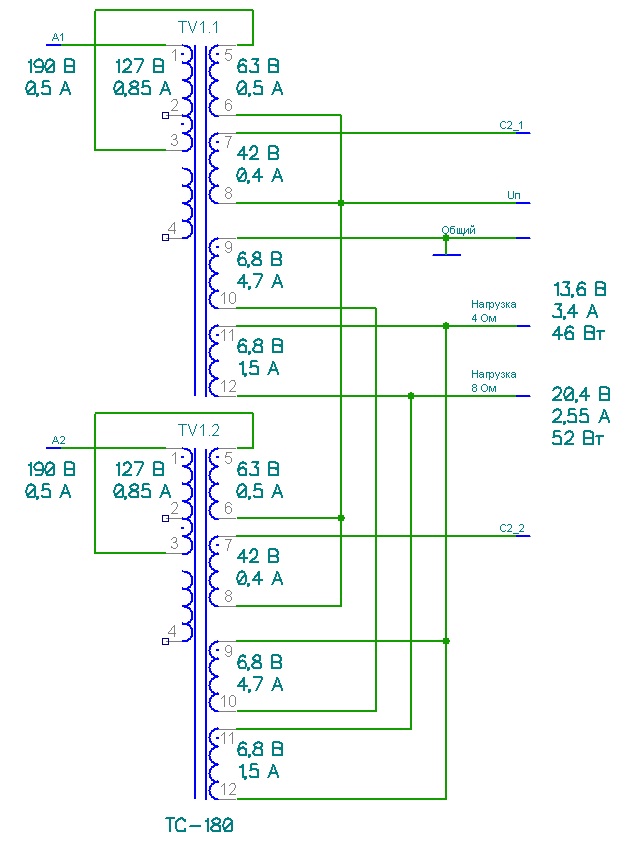
In this article I will try to touch on the issue of selecting an output transformer for a powerful push-pull tube amplifier. This does not mean a calculation from scratch for a specific lamp mode, but a selection from ready-made options. The selection, again, is not ideal, but approximate. Working with such a transformer is not a fact that it will be possible to achieve perfect matching, maximum transfer of power to the load or minimum distortion. But, at least, such an amplifier will work and deliver something to the load, delighting its creator.
, , , , , , . , - , , .
, , , , . .
? , , - . . , (), , ( - 4 8 , – 6 ), , . , 16 4 2 , 8 ( ).
- . , 644, , 100 (420 4 ), 250 (550 ).

. 100 2 , 8 , , 160 . 20 ( ).
, «»
, ( ) . , ( – ) ( ), . , , – , .
, – . , ? , . . 10 , 100 , , , , ( ).
644 . ? , , 100 (420 4 ), 250 (550 ). . , . . U ? , ( 0). , 2U. 7 , 18 . U 250 , , , – 260 . , . ( ) 420 . , 260 ∙0,42 = 109 . , , 55 . , . 0, . , , , , – . . « », , , , «» . .
, , . . , 55 22,5 . . -, - ( , ), -, - ( , ), , - ( ), , (, , ) . 20 ( 230 , 260).

, -56. , : 420 , 420/1,41=300 . 260 , 260/1,41=184 . : 127 , 0,44 , 4 12,6 , 3,15 , 40 , 8 18,9 , 2,36 , 45 . ( 4 ) 127/12,6=10.
, 0,3∙10=3 , 177/2/10=9,2 . ? , . 3∙3∙4=36 . - 9,2∙9,2/4=21 . , , , . ? . 36 , 12 , 120 ( 127 – ). 120∙2∙1,41=338 . , , , . , , . , , , . , 9 230 , , . , , , . , . . , , , .
? – . 4 , U1, 8 , U2.
|
|
U1, |
U2, |
Ri, |
P=1 |
2 |
3,6 |
3,2 |
P=5 |
4,5 |
8,6 |
8,2 |
P=9 |
6 |
11,5 |
38,4 |
3 1, 5 9 . . , . , , 1 170 . ( ) . , , .
, , . , +230 , 17 , . , 17∙1,41=24 255 , 25 , .
– . – . , , 340 . , , , ( ) . ( 50 , ), (50∙340=17 ) 21 . 36 36 18 , .
-180 -56 . , , . 127 , 3 6,8 , . , . , 55 , . , , , , .
– , 645. , -180.

800 400 (700 ). 567 , 283 . – 160 . , , 80 . 80 , 40 , 35 . ?

283/2=142 . 127 , 0,85 63 , 0,5 . , – 0,567, , . 42 , 0,4 . . , . 190/13,6=14 ( 4 ). 4 142/14=10 , 0,567∙14= 8 . , , . 8 , 4,7 . , 6,8 , 4,7 . 23 , .

. 190/20,4=9,3 ( 4 ). 4 142/9,3=15,2 , 0,567∙9,3= 5,3 . , 15,2∙15,2/4=57 , - 5,3∙5,3∙4=112 . , , 450 . 160 , 17,2 , , - 74 . 17,2/4=4,3 , 4,7 , . , . , 4 644.
It should be noted that all the above calculations are very rough, "approximate". To obtain more accurate data, more serious modeling and prototyping with the measurement of real values is needed.